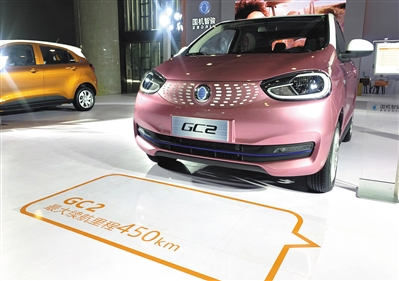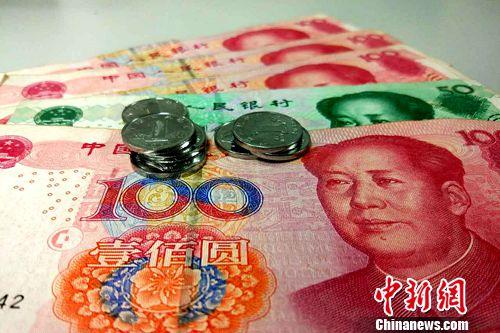
Focused double integral
The new energy automobile industry in 2019 is doomed to be unsettled. In the post-subsidy era, the double-point policy related to the development of new energy vehicle market will be adjusted again. In early September, the Ministry of Industry and Information Technology and other relevant departments announced the Decision on Amending the Measures for the Parallel Management of Average Fuel Consumption of Passenger Car Enterprises and New Energy Vehicle Points (Draft for Comment). All-media reporters combed the new "double points" draft for comments and found that this time it mainly involved a number of content adjustments, including changes in the calculation method of points, redefining traditional energy passenger cars, and clarifying the definition of low-fuel passenger cars, which brought new changes to new energy vehicles.
Text, photo: Guangzhou Daily all-media reporter Deng Li
Break the rules!
Pure electric vehicles no longer share the integral pressure of high-displacement vehicles.
The adjustment of pure electric vehicles in the new "double integral" draft for comments has attracted much attention. For example, Article 10 is added: "The actual value of average fuel consumption of traditional energy passenger cars in enterprises refers to the actual value of average fuel consumption of enterprises in which new energy vehicles do not participate in accounting." This new regulation means that the new energy and traditional energy passenger cars of car companies will be accounted for independently in the future. It is widely believed in the industry that this will break the rules that pure electric vehicles share the fuel consumption points of large-displacement fuel vehicles.
Cui Dongshu, Secretary-General of the National Passenger Car Information Association, said that before, some traditional fuel car companies actively laid out new energy fields in response to the "double-integral" policy, so as to achieve the effect that high-displacement vehicles rely on pure electric vehicles to share the pressure of double-integral, and this method will not be feasible in the future. The new "double-integral" draft for comments allows new energy vehicles not to participate in the average fuel consumption accounting of traditional energy passenger cars, which will help new energy vehicles to further accelerate their development.
Hybrid benefits!
Encourage the development of low fuel consumption vehicles.
In the new "double integral" draft for comments, there is also a regulation that is regarded as affecting the development trend of new energy vehicles. That is, Article 16 is added: "When calculating the integral standard value of new energy vehicles of passenger car enterprises, the production or import of low-fuel passenger cars shall be calculated according to 0.5 times of its quantity." According to the current understanding, all vehicles whose fuel consumption meets the standard under comprehensive working conditions can be considered as low-fuel passenger vehicles, such as hybrid vehicles with obvious fuel-saving effect. Therefore, industry experts generally believe that this is to strongly encourage the development of low fuel consumption models.
All-media reporters noticed that on July 9 this year, the Ministry of Industry and Information Technology had publicly solicited opinions from the public on the amendment (draft for comments) to the Measures for the Parallel Management of Average Fuel Consumption of Passenger Car Enterprises and New Energy Vehicle Points, and proposed for the first time to give preferential treatment to non-plug-in hybrid vehicles. This has benefited the hybrid models of Japanese companies such as Toyota and Honda. For the new adjustment, the relevant car companies said they were waiting to see. For example, Honda China said that it is studying and studying the revised opinion draft, and has not made any product adjustments for the opinion draft.
The weight of cruising range decreases.
The energy consumption requirements of pure electric vehicles are improved.
The new "double points" exposure draft adjusts the calculation method of new energy passenger car models, and reduces the impact of cruising range on new energy vehicle points. In terms of the lower limit of pure electric passenger cars, the revised draft stipulates for the first time that all passenger cars with cruising range below 150km will be accumulated according to 1 point; At the same time, the upper limit of fuel cell vehicle points is increased by 1 point compared with the current regulations. At the same time, based on the current pure electric vehicle with a cruising range of 350km on the market, according to the previous "double points" policy, the maximum accumulated points can be 5, and if calculated according to the adjusted double points policy amendment, only 2.5 points can be obtained.
Insiders said that on the one hand, through the adjustment of the integral calculation formula, it will link up with the existing policies in terms of vehicle technical indicators and guide the technological progress of the industry; On the other hand, optimize the index system and strengthen the requirements for energy consumption and other indicators that reflect the advanced nature of the whole vehicle.
Modify points trading rules
Increase by 2% every year.
The second paragraph of Article 22 in the new "Double Points" exposure draft is amended as: "The positive points of new energy vehicles of passenger car enterprises can be freely traded according to these Measures. The positive points of new energy vehicles generated in 2019 and beyond will be carried forward in accordance with the following rules, and the validity period of the carry-forward will not exceed three years.
All-media reporters noticed that the new "double points" exposure draft gave clear carry-over rules for the new energy points, and additionally stipulated that it could be carried over in 2019. Previously, the "double points" policy stipulated that the positive points of new energy vehicles should not be carried forward, and the adjustment plan not only encouraged traditional energy passenger car enterprises to actively reduce fuel consumption, but also encouraged enterprises that only produced new energy vehicles, which could bring more new energy points to the points trading market.
In addition, the second paragraph of Article 17 in the new "Double Integral" exposure draft is amended as: "In 2021, 2022 and 2023, the integral proportion of new energy vehicles is required to be 14%, 16% and 18% respectively. The requirements for the proportion of new energy vehicle points in 2024 and beyond will be announced separately by the Ministry of Industry and Information Technology. " Compared with the current "double points" policy, the proportion of new energy points in 2019 and 2020 is 10% and 12% respectively, and the "double points" of new energy will increase at an equal rate of 2% every year from 2019 to 2023. The industry believes that most car companies can easily cope with the "double points" policy.
Methanol and other fuel vehicles
Incorporate into traditional passenger cars
It is worth noting that the new "double-integral" draft revised the third paragraph of Article 4 as follows: "The traditional energy passenger cars mentioned in these Measures refer to passenger cars (including non-plug-in hybrid passenger cars) that can burn gasoline, diesel, gas fuel or alcohol ether fuel, etc., except new energy passenger cars." Alcohol ether fuel refers to methanol, dimethyl ether and other clean fuels for replacing gasoline and diesel. If it is included in the category of traditional passenger cars, it can realize the maximum clean and reasonable utilization of coal resources. In other words, diversification of vehicle fuels and ensuring energy security are being put on the agenda.
[market observation]
Conducive to the healthy development of the industry
According to the previously published Evaluation Method and Index of Passenger Car Fuel Consumption, by 2025, the average fuel consumption index of Chinese automobile enterprises will be 4L per 100 kilometers. To achieve this target, we need a balanced development of the market. Cui Dongshu said: The new version of the "double integral" amendment provides a more relaxed environment for the development of new energy automobile industry, and on the other hand, it also takes into account the development needs of energy-saving vehicles, which will play a good guiding role in the development of the industry. The new adjustment of the "double integral" policy has attracted the industry’s most attention to the integral calculation method proposed for low-fuel consumption vehicles, which means that the requirements for new energy integral are also reduced, which can be expected to promote the popularization of energy-saving technologies and hybrid technologies for fuel vehicles, such as 48V micro-mixing, idle start-stop and other energy-saving technologies will be better promoted.
At the same time, Japanese companies with obvious advantages in hybrid technology of oil and electricity are also welcoming vitality. In this way, it can also reduce the "virtual fire" caused by the development of pure electric vehicles in the market, and traditional car companies do not have to rush to abandon the internal combustion engine technology and concentrate on the new energy field. This is conducive to the balanced development of the automobile market, so as to achieve the goal of 4L with high quality.
For joint ventures and foreign brands, it is also very beneficial to include hybrid models in the assessment; Especially for the major domestic automobile groups that rely on joint venture brands to contribute profits, slowing down the market in the automobile market can be described as a timely help.
All-media reporters noticed that although the new "double points" policy is still being solicited, joint venture car companies have accelerated in the field of new energy vehicles, especially hybrid models. For example, BMW, Dongben, Lincoln, Jeep, etc. have launched new hybrid models. Generally speaking, the constantly adjusted "double integral" policy is also exploring the most suitable development route, but the general direction of energy saving will never change.


































